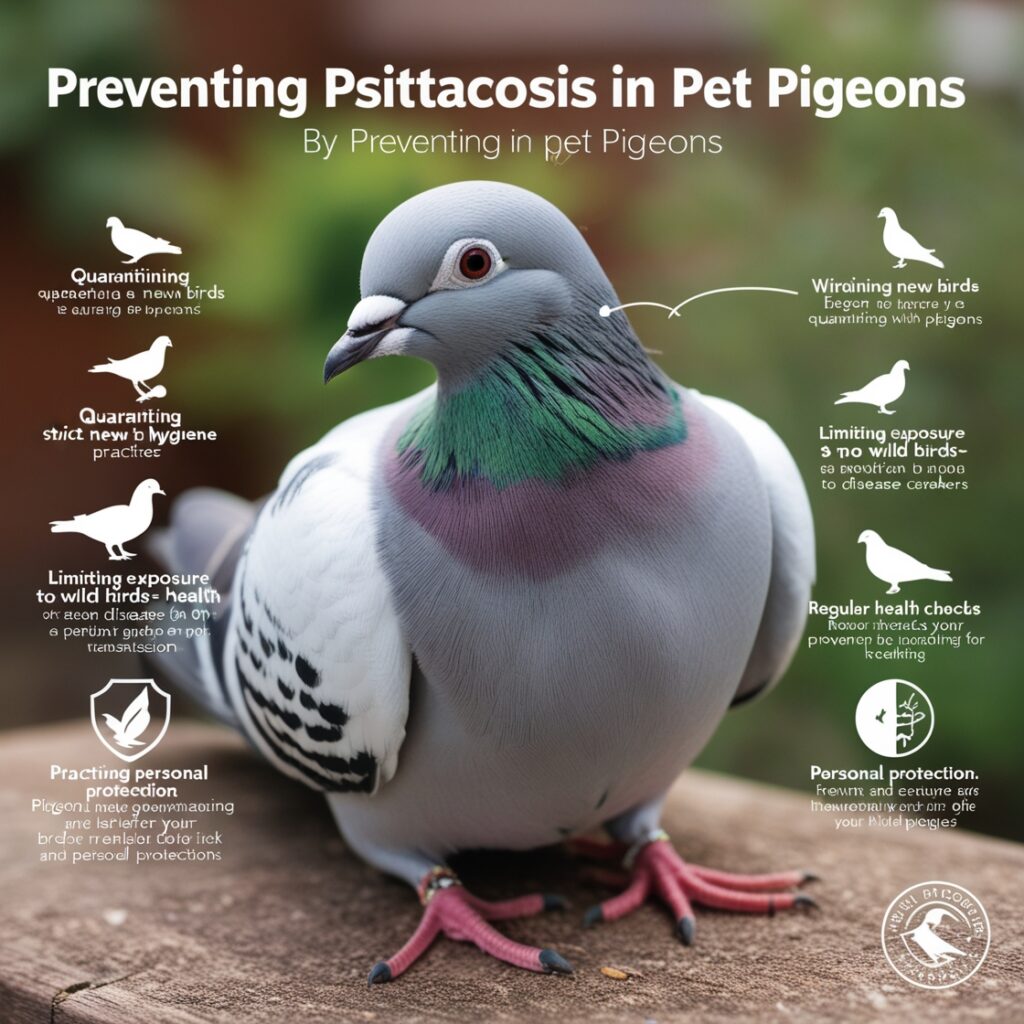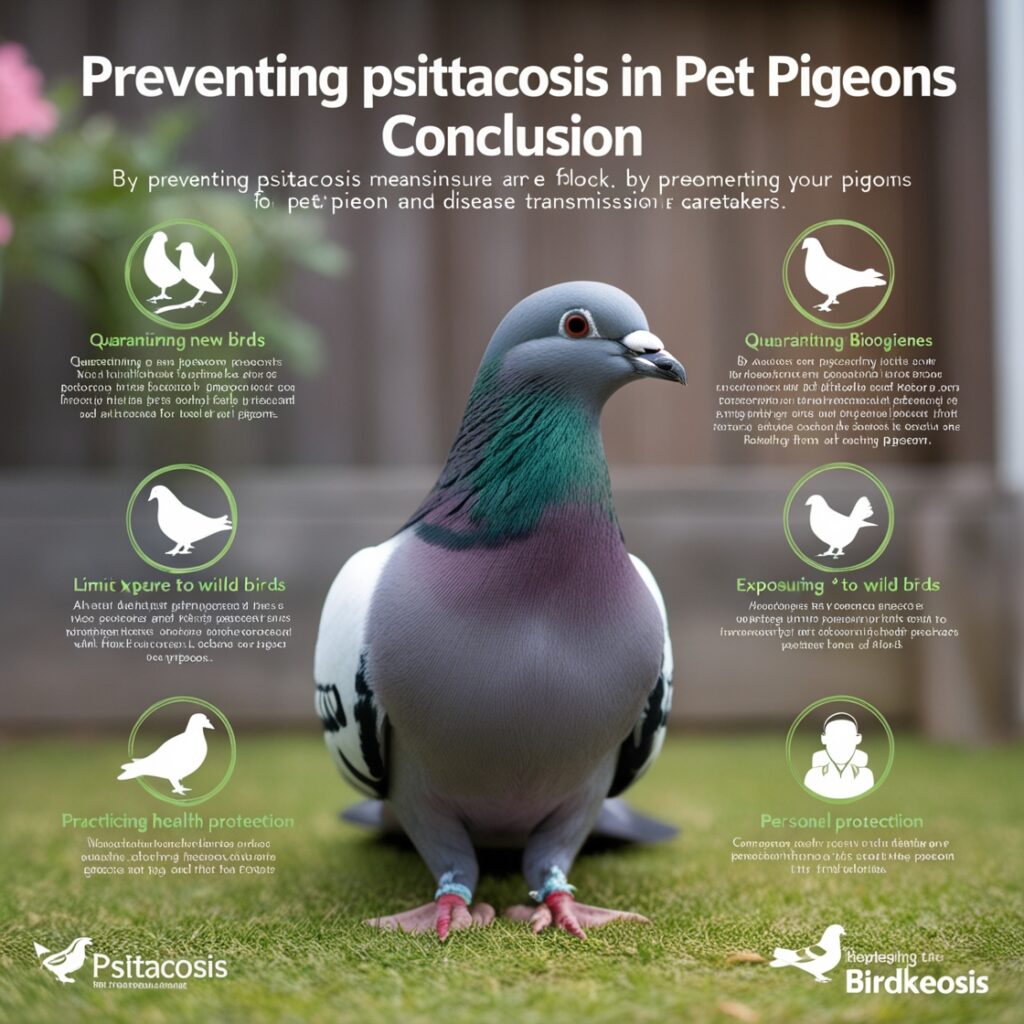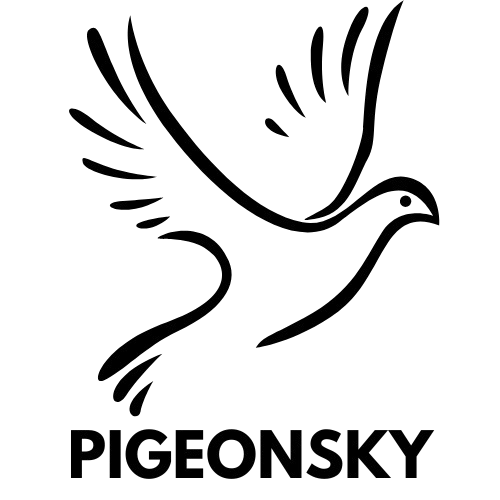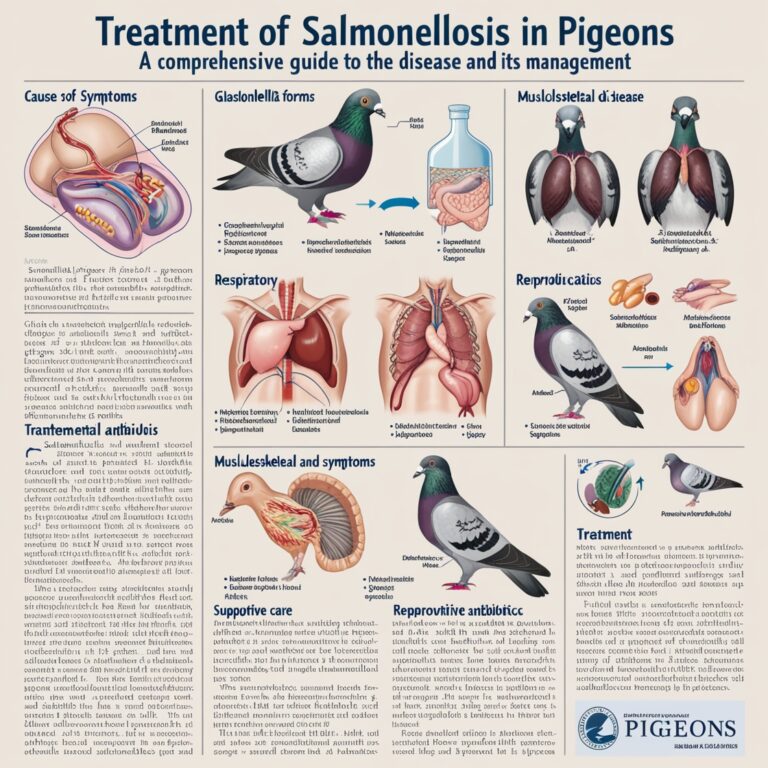Psittacosis in Pigeons
Psittacosis (Parrot Fever) in Pet Pigeons: A Comprehensive Guide
Psittacosis, also known as parrot fever or ornithosis, is a zoonotic disease caused by the bacterium Chlamydia psittaci. While commonly associated with parrots, this infection can also affect pigeons and other bird species. Understanding psittacosis is crucial for pigeon owners and enthusiasts, as the disease can pose serious health risks to both birds and humans. This guide will cover the causes, symptoms, transmission methods, diagnosis, treatment options, and prevention strategies for psittacosis in pet pigeons.
Causes of Psittacosis
Psittacosis is caused by the bacterium Chlamydia psittaci, which can infect various bird species, including pigeons, parrots, and doves. The bacteria are primarily shed in the droppings, respiratory secretions, and feather dust of infected birds. Pigeons can become carriers of the disease, showing no symptoms while still being capable of transmitting the bacteria to other birds or humans.

Symptoms of Psittacosis in Pigeons
The clinical signs of psittacosis can vary widely among pigeons. In some cases, birds may remain asymptomatic, but when symptoms do occur, they can include:
- Respiratory Distress: Signs may include labored breathing, coughing, nasal discharge, and sneezing.
- Conjunctivitis: Inflammation of the eyes leading to redness, swelling, and discharge.
- Lethargy and Weakness: Infected pigeons often display fatigue and reduced activity levels.
- Diarrhea: Changes in droppings, including watery or greenish feces, may be observed.
- Weight Loss: A decrease in appetite can lead to significant weight loss over time.
- Swollen Joints: Advanced cases can result in joint swelling and systemic symptoms.
- Sudden Death: In severe cases, psittacosis can lead to rapid deterioration and death.
Transmission of Psittacosis
Psittacosis can spread through various pathways, making it essential for pigeon owners to be vigilant. Transmission methods include:
- Aerosol Transmission: Infected birds can shed bacteria in their droppings and respiratory secretions, which can become aerosolized and inhaled by other pigeons.
- Direct Contact: Close interaction with infected birds, including handling, can facilitate the spread of the disease.
- Contaminated Environments: Bacteria can survive in the environment, contaminating food, water, perches, and nesting areas.
Additionally, due to its zoonotic nature, psittacosis can be transmitted from pigeons to humans, underscoring the need for good hygiene practices.
Diagnosis of Psittacosis
Diagnosing psittacosis can be challenging, as its symptoms often overlap with those of other diseases. A veterinarian may use the following methods for diagnosis:
- Clinical Examination: A thorough physical examination to assess the bird’s overall health and symptoms.
- Laboratory Testing: Blood tests, fecal samples, or swabs may be collected to confirm the presence of Chlamydia psittaci.
- PCR Testing: Polymerase chain reaction (PCR) tests are highly effective in detecting the bacterium in tissues or secretions.
- Imaging: X-rays can help evaluate respiratory health and identify potential complications.
Treatment of Psittacosis
Once diagnosed, psittacosis can be treated effectively with antibiotics. The primary treatment options include:
- Tetracyclines: Doxycycline is commonly prescribed and is effective at eliminating Chlamydia psittaci. Treatment usually lasts 45 days or longer to ensure complete eradication of the bacteria.
- Enrofloxacin: This antibiotic may be used as an alternative, particularly if the pigeon does not tolerate doxycycline well.
- Supportive Care: In addition to antibiotics, providing a stress-free environment, ensuring hydration, and offering nutritious food are critical for recovery.

Psittacosis in Pigeons
Prevention of Psittacosis
To safeguard the health of both pigeons and their human caretakers, several preventive measures should be implemented:
- Quarantine New Birds: Isolate any new pigeons for at least 30 days before introducing them to your existing flock to monitor for signs of illness.
- Hygiene and Sanitation: Regularly clean and disinfect lofts, feeding areas, and water sources to prevent bacterial buildup.
- Limit Exposure to Wild Birds: Secure aviaries to minimize contact with wild birds, which can carry diseases.
- Regular Health Checks: Conduct routine health assessments to catch potential infections early.
- Personal Protection: Wear gloves and masks when handling pigeons or cleaning contaminated areas to minimize the risk of transmission.
- Quarantine New Birds:
Whenever you acquire new pigeons, it is essential to isolate them for a minimum of 30 days before introducing them to your existing flock. This quarantine period allows you to monitor the new birds for any signs of illness or disease, including psittacosis, which can often go unnoticed in asymptomatic carriers. By keeping new arrivals separate, you significantly reduce the risk of introducing infections to your established birds. - Hygiene and Sanitation:
Maintaining cleanliness is vital in preventing the spread of disease. Regularly clean and disinfect all areas where your pigeons live, including lofts, feeding stations, and water sources. This practice helps eliminate potential bacterial buildup, including Chlamydia psittaci, which can thrive in contaminated environments. Ensure that droppings are removed frequently and that feeding equipment is sanitized to minimize the risk of infection. - Limit Exposure to Wild Birds:
Wild birds can carry various diseases, including psittacosis, and may pose a risk to your pet pigeons. To protect your flock, secure aviaries and lofts to minimize contact with wild birds. Avoid feeding your pigeons in open areas where they might come into contact with wild birds or their droppings. Implementing physical barriers, such as netting, can help keep wild birds out of your pigeons’ living space. - Regular Health Checks:
Conduct routine health assessments of your pigeons to catch potential infections early. Look for any unusual behaviors, physical signs of illness, or changes in eating habits. Regularly monitoring your birds allows for early detection and intervention if symptoms of psittacosis or other diseases arise. Schedule veterinary check-ups to ensure your flock remains healthy and to discuss any concerns you may have. - Personal Protection:
Since psittacosis can be transmitted to humans, it is crucial to practice good personal hygiene when handling your pigeons or cleaning their living areas. Wear gloves and masks to minimize exposure to droppings and respiratory secretions, which can contain the bacteria. After handling birds or cleaning their environment, wash your hands thoroughly with soap and water to further reduce the risk of transmission.
Psittacosis in Humans
Psittacosis can be transmitted to humans, typically resulting in flu-like symptoms, including fever, chills, headache, muscle aches, cough, and shortness of breath. In severe cases, it can lead to pneumonia or other serious respiratory complications. If exposure to infected pigeons is suspected, it’s vital to seek medical attention promptly, as early diagnosis and treatment with antibiotics like doxycycline or azithromycin are effective in preventing complications.







